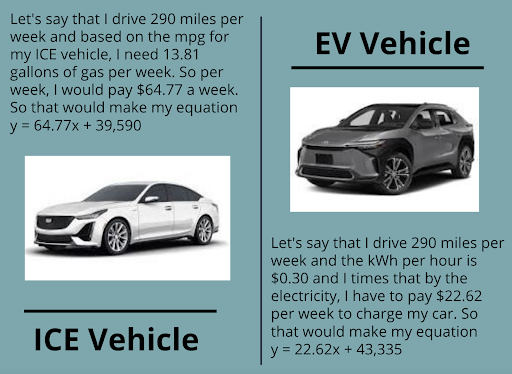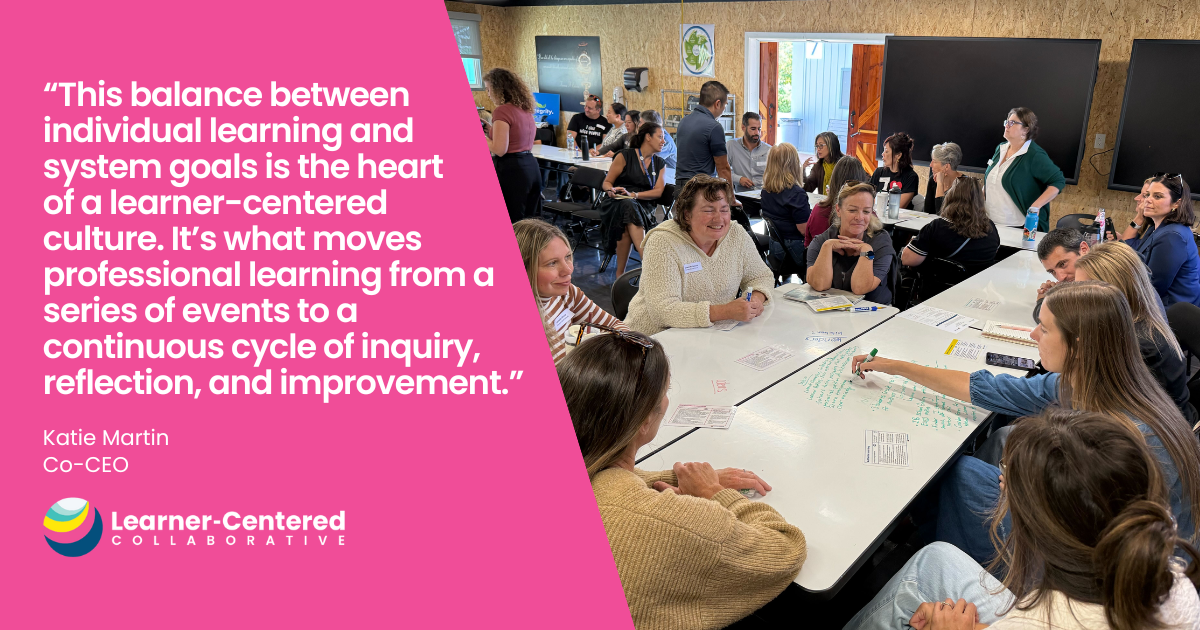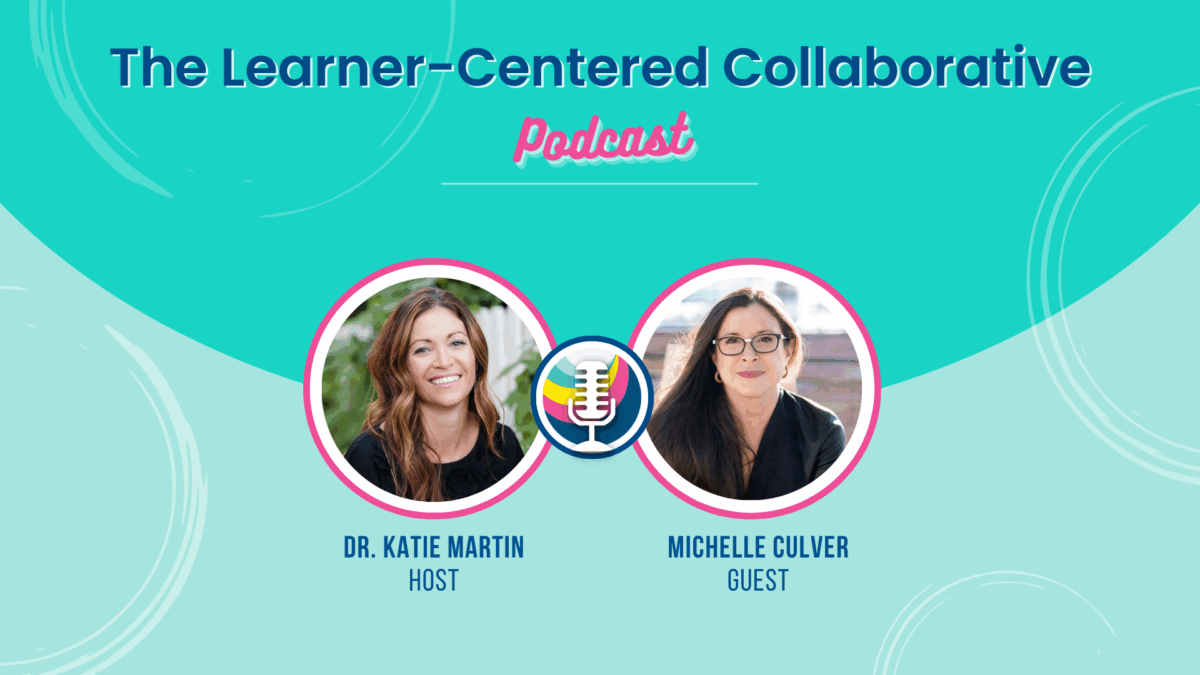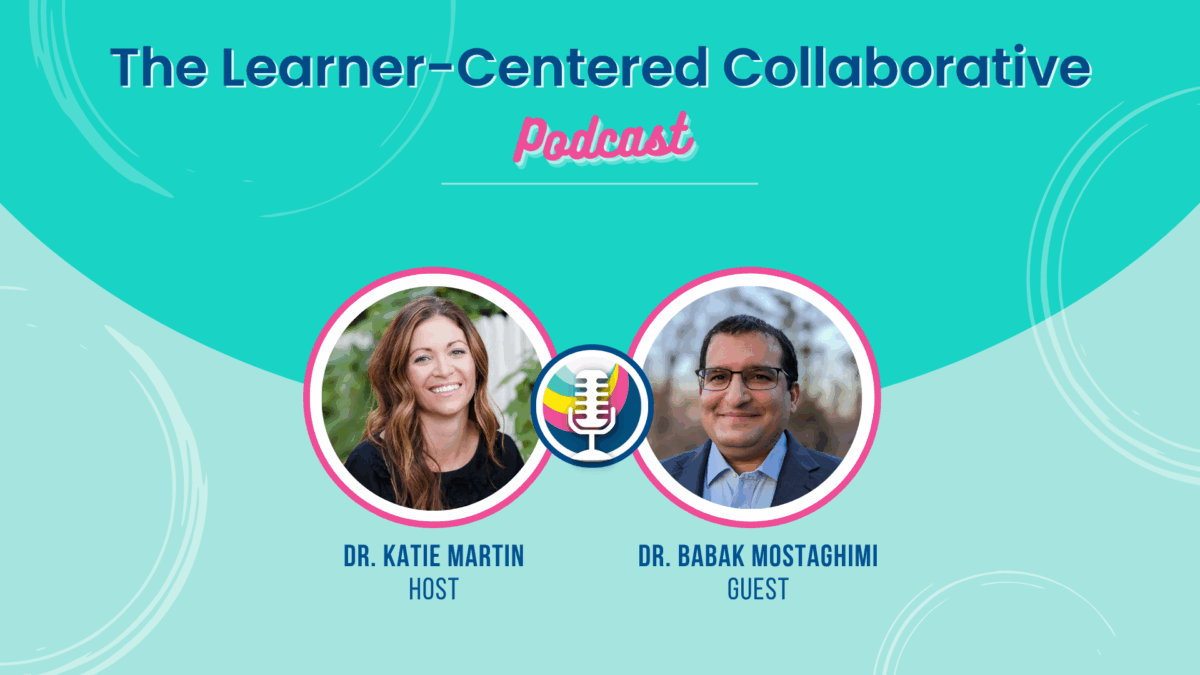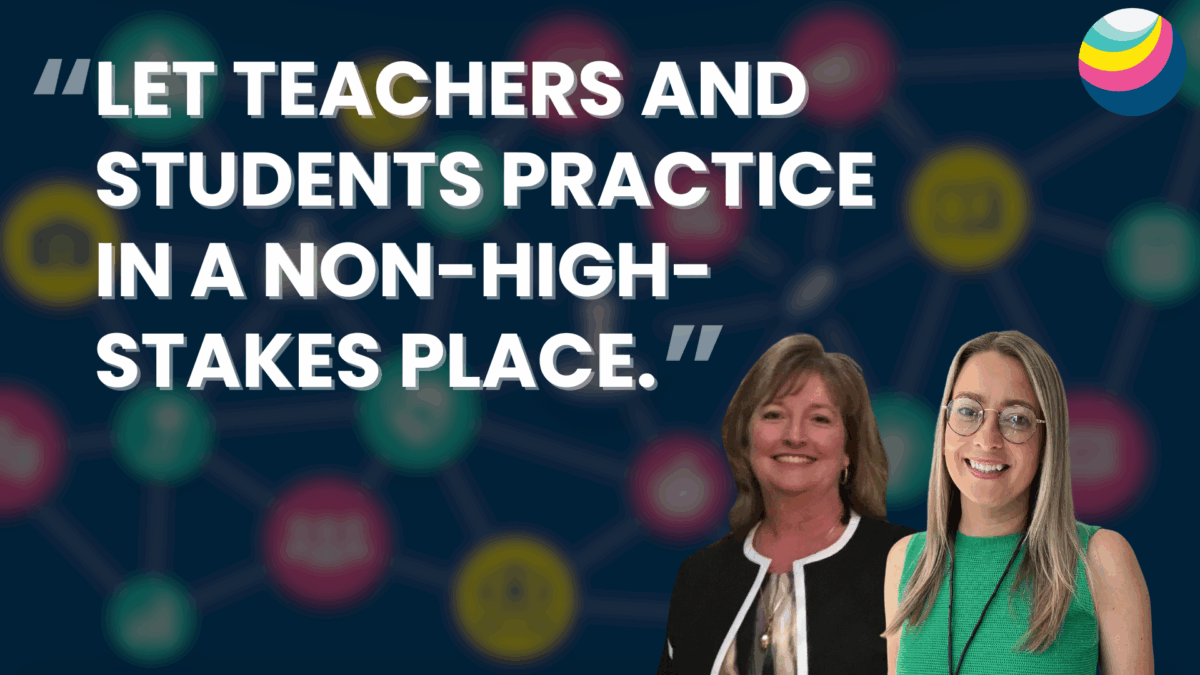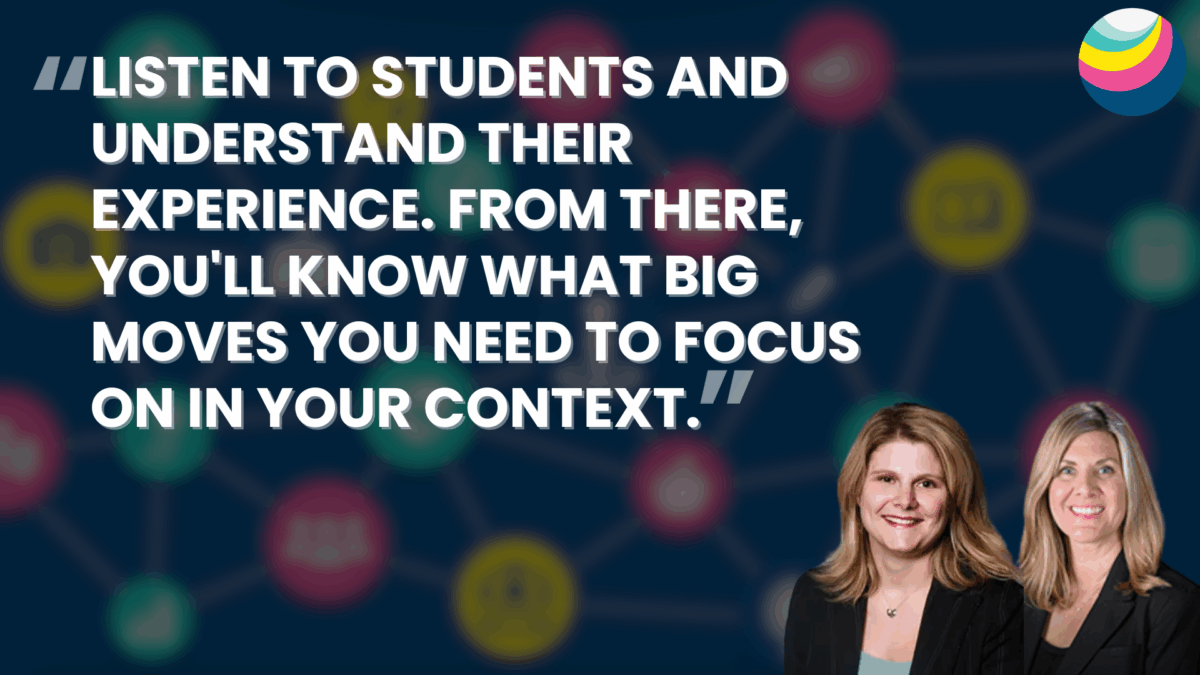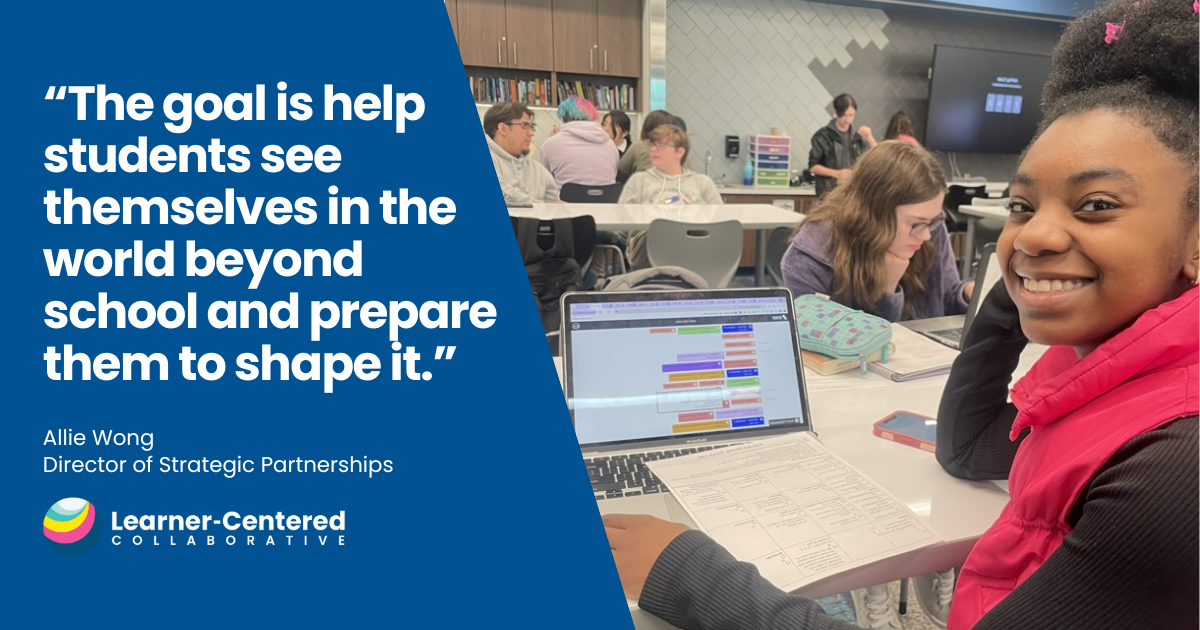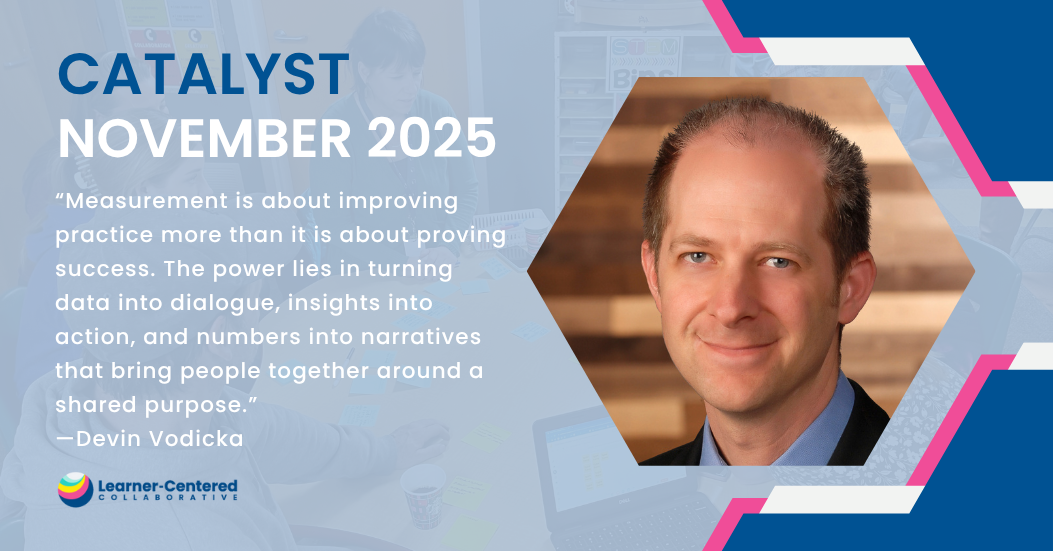Designing Units with Student Choice, Real-World Problem Solving, and Technology Integration
By: Vince Fabella, Math Teacher & Technology Lead at Laguna Beach Unified School District
Student engagement and technology integration are crucial components of effective teaching and learning, helping to promote interactive, dynamic, and creative problem-solving approaches that empower learners. Although the use of educational technology has increased significantly in recent years, there may be a temptation to abandon it in favor of traditional teaching methods. However, it’s essential to recognize that technology should be viewed as a tool to enhance instruction, rather than a substitute for effective teaching practices. Here, I’ll explore how Laguna Beach USD utilized the T3 Framework for Innovation to transform professional development and redesign instructional units, resulting in learner-centered experiences that prioritize whole-learner outcomes.
Realizing a learner-centered vision starts with being explicit about the whole-learner outcomes we want for our kids. Explore 3 whole-learner outcomes in this blog post.
Empowering Teachers with Professional Development
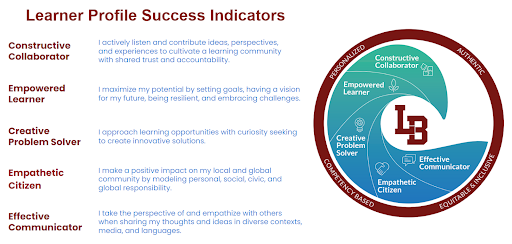
After working with the Learner-Centered Collaborative over the past year, Laguna Beach Unified School District has recently adopted a Learner Profile that outlines the desired outcomes for all learners. As the world evolves, educators also need to shift their practices to align with broader goals and metrics of success. However, taking the time to rework an entire unit can be daunting, especially without guidance. Recognizing this need, Laguna Beach USD introduced a comprehensive unit design professional development opportunity for all teachers, which I eagerly embraced.
Looking to develop a learner profile? Check out How to Get Started Developing a Learner Profile.
During the first part of LBUSD’s Unit Design, teachers first create a Driving Question that aligns with one or more of the district’s Learner Profile Success Indicators.
This initiative not only provided teachers with dedicated time to develop their units, but also offered financial incentives tied to specific milestones. Teachers were compensated not only for creating their lessons and presenting them at a gallery walk alongside other teachers and district officials but also for implementing the redesigned unit, gathering student feedback, reflecting on the implementation process, and even collaborating with colleagues on additional units. The district’s commitment to supporting teacher growth, coupled with a gamified rewards system, fueled a sense of empowerment and motivation among my colleagues and me.
Engaging Learners
Engaging students is a vital aspect of effective learning and teaching. To promote student engagement, student choice is one of the key aspects of our units. Our district is committed to cultivating well-rounded learners who possess qualities such as being empowered learners, creative problem solvers, effective communicators, constructive collaborators, and empathetic citizens. To achieve these goals, teachers embrace a learner-centered approach by starting their instructional design process with an essential or driving question. This approach empowers students to explore and tackle real-world “wicked problems” through various paths of their own choosing.
Exploring Real-World Connections: Cost Analysis of Electric vs. Internal Combustion Vehicles

The driving question that guided my unit was: “How can a system of equations help determine the optimal choice between different options?” To delve into this question, I had my students select one electric vehicle and one internal combustion engine vehicle. Throughout the unit, they analyzed various factors, including the cost of the cars, the cost to power them (considering electric rates and local gasoline prices), fuel efficiency, and kWh per mile. Armed with this information, students then utilized equations to write, graph, and solve mathematical models representing the total cost of their chosen vehicles.
To establish a common understanding of key concepts related to cars, fuel efficiency and measures of electricity, I implemented an introductory activity in my unit. Using the online tool Flippity, I randomly paired up students by using a digital spinner to choose a random student who gave me a number from 1-10. I then used the “groups of 2” function and hit the randomize button that number of times. As part of the activity, I incorporated the EduProtocols strategy called “Cyber Sandwich” that I learned during our summer professional development. Students collaboratively accessed a shared Google Slides presentation and took notes while watching a video on explaining electric vehicles and fuel efficiency of internal combustion engine (ICE) cars. Afterward, they consolidated their findings onto a common slide, identifying similarities in their notes. To maintain engagement and ensure comprehensive note-taking, each student provided a brief synopsis of their individual learning experience. This approach not only kept students actively involved, but also minimized the chances of missing important or interesting information, as two students were capturing the content simultaneously.
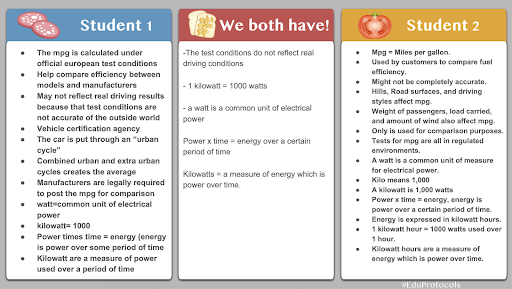
Maximizing the Impact of Technology in Education
In today’s educational landscape, technology plays an important role in enhancing teaching and learning experiences. However, it is essential to recognize that the mere presence of a virtual environment isn’t enough to foster authentic learning and deep understanding. As Sonny Magana points out in his book Disruptive Classroom Technologies, “…the virtual environment alone, the digital context, is insufficient as a means of bringing about authentic learning and understanding.” To harness the maximum potential of technology, educators need to adopt a thoughtful and intentional approach that goes beyond the superficial use of tools.
Throughout our unit design training, we were compelled to integrate technology into pedagogical practices to create meaningful learning opportunities that promote engagement, collaboration, and critical thinking. By leveraging technology as a tool rather than an end in itself, teachers can facilitate authentic learning experiences that foster deeper understanding and empower students to become active contributors in their education.
Conclusion
The integration of technology and student engagement is at the heart of effective teaching and learning. At Laguna Beach USD, we have benefited from the power of effective professional development and unit design and encouraging leadership, colleagues, and thought partners. By empowering teachers with dedicated time, incentives, and support, we’ve created a community of growth and innovation. Technology is not a mere afterthought and add-on, but a key element in this process. By thoughtfully integrating technology, we’re more likely to unlock its potential to enhance instruction and foster authentic learning experiences for our students. I’m looking forward to continuing to infuse my classroom with a sense of purpose, embracing technology as a valuable ally along the way. Through collaboration, dedication, and a learner-centered mindset, we can create vibrant learning environments that promote a lifelong passion for knowledge and equip our students with the skills they need to be successful citizens upon graduation and beyond.
Vinca Fabella is a Math Teacher and Technology Lead at Laguna Beach Unified School District, a Learner-Centered Collaborative district partner. You can message and follow him @vfabella.
